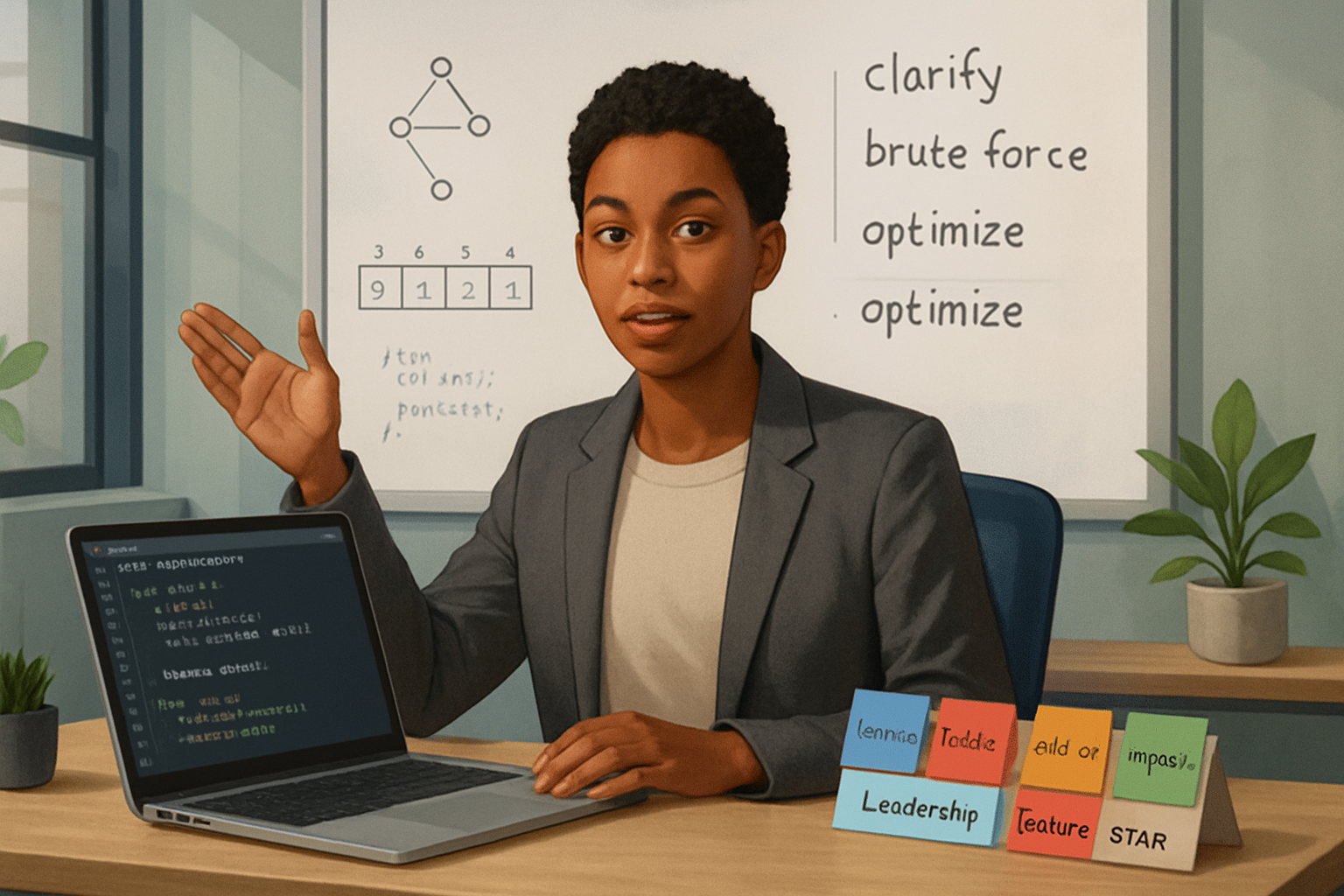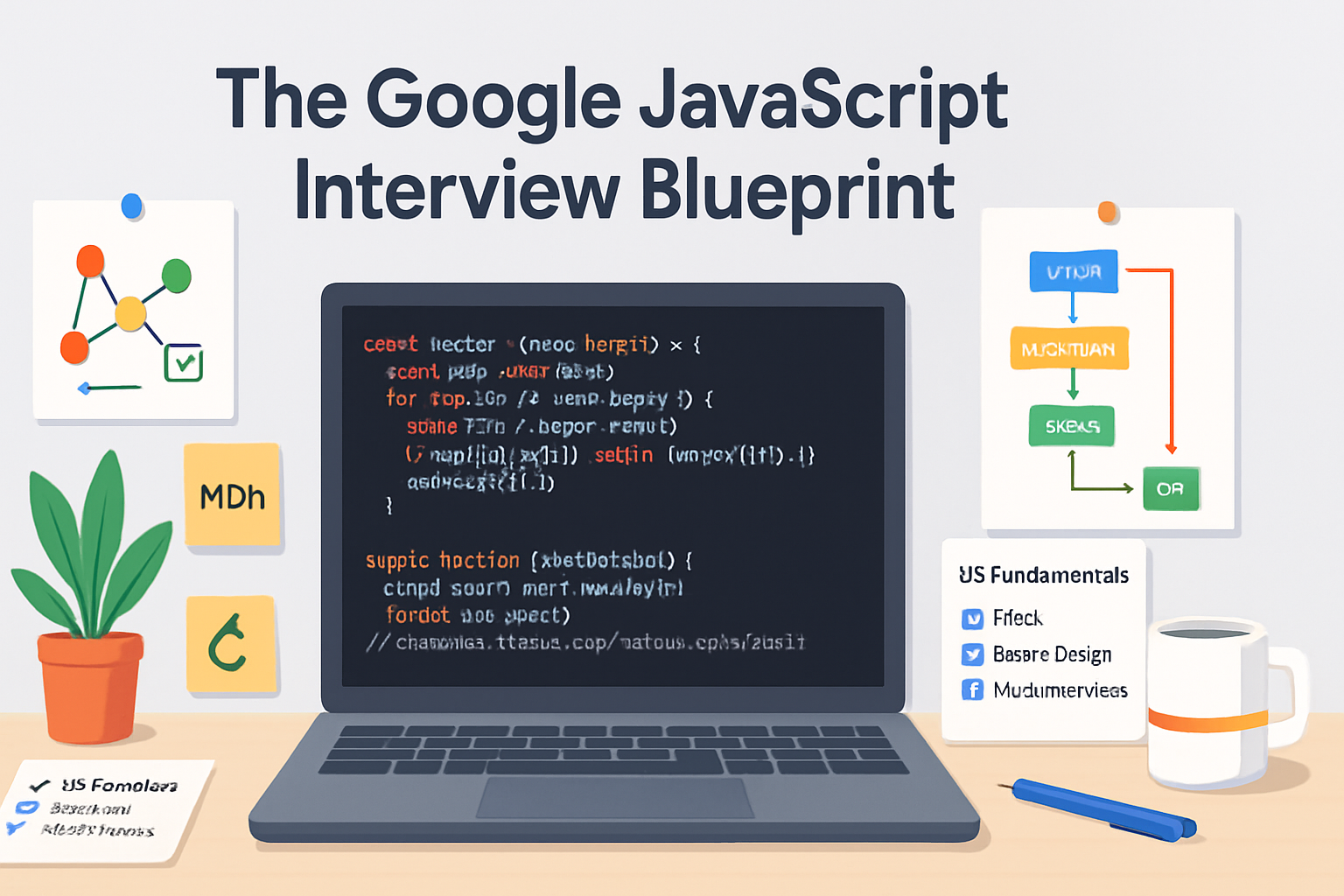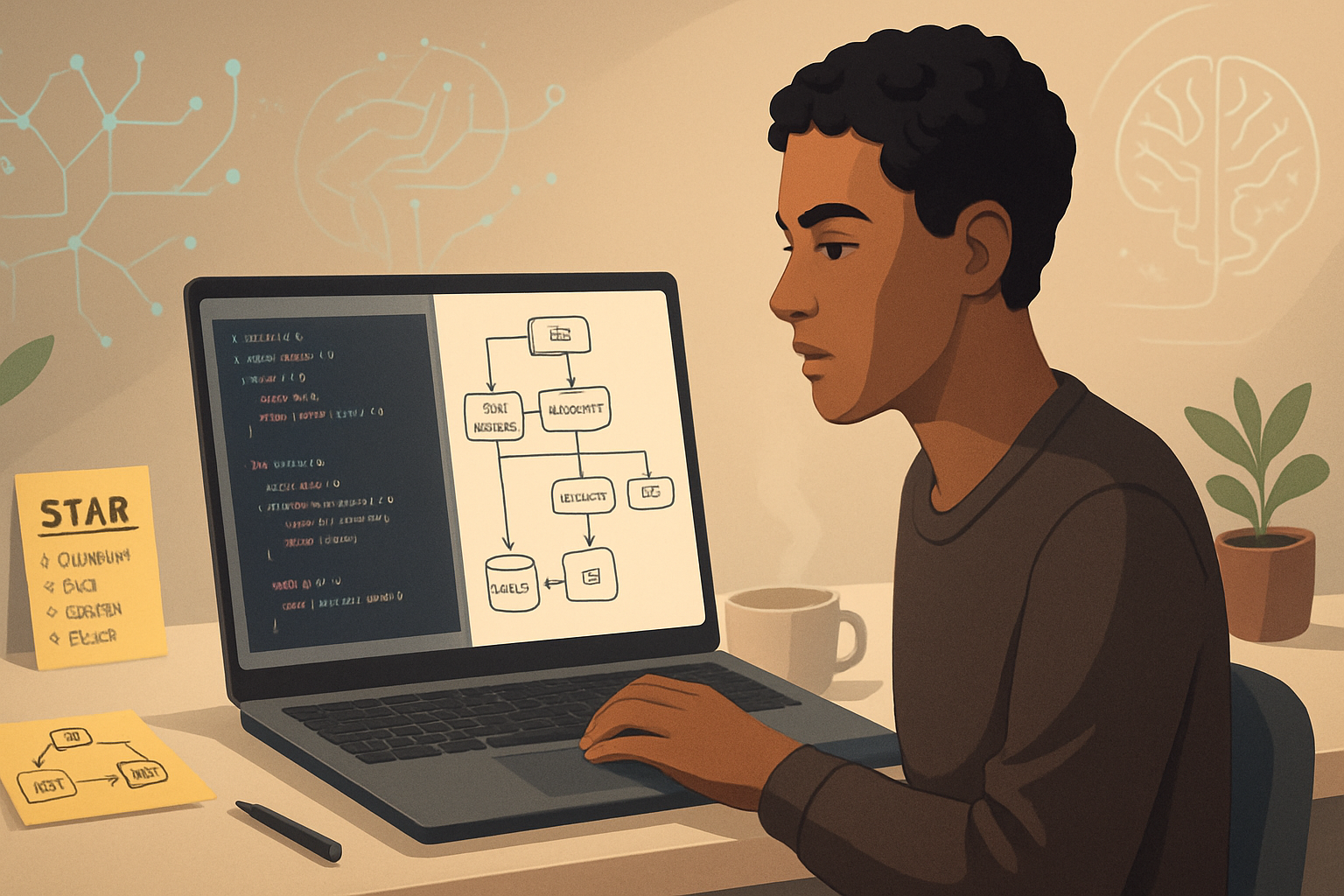· career · 6 min read
The Google Interview Playbook: Crafting Your Unique Strategy
A step-by-step playbook to build a personalized Google interview strategy: balance coding and behavioral prep, map your experiences to Google's values, and practice a repeatable problem-solving routine that highlights your unique strengths.

By the end of this article you’ll have a practical, personalized playbook you can use to prepare for a Google interview - one that balances coding accuracy with behavioral clarity and that lets your unique problem-solving style shine. Read fast. Act deliberately. Win consistently.
Why a personalized playbook matters (fast)
Google interviews are structured, rigorous, and intentionally broad. That makes them predictable in format but unpredictable in content. You can memorize patterns. Or you can build a strategy that uses your background, your thinking style, and your life experiences as an advantage.
A single template rarely wins. But a consistent, personalized routine does.
Understand the loop: what Google typically evaluates
- Technical correctness and problem solving (data structures, algorithms, complexity reasoning).
- System design (for mid-to-senior roles): architecture, tradeoffs, scalability.
- Role-related knowledge (product sense for PMs, infra fundamentals for SREs, etc.).
- Behavioral fit, often called “Googliness”: collaboration, humility, impact, leadership.
Google summarizes the process on its hiring page - useful context for planning your prep: https://careers.google.com/how-we-hire/.
The two-track balance: coding vs behavioral
Treat coding and behavioral as two complementary tracks, not independent chores. One shows you can get to a correct solution; the other shows you can work on a team and amplify impact.
High-level balance guidance:
- Early preparation (first 4–6 weeks): 70% coding, 30% behavioral.
- Final polishing (last 2 weeks before interviews): 50/50 - ramp up mock interviews and behavioral stories.
- On interview day: treat each question as both technical and interpersonal. Code under the camera. Narrate with empathy.
Why the shift? Coding fluency compounds with spaced repetition. Behavioral answers improve most dramatically with storytelling refinement and feedback.
Build your playbook: the components
- Assessment (week 0)
- Identify your target role and level (L3/L4 for new grads, L5/L6 for experienced hires). Levels change expectations.
- Take a baseline: one timed medium-hard problem in a language you’ll use during interviews. Record time, correctness, and communication clarity.
- Template problem-solving workflow (use every time)
- Clarify the problem out loud. Ask examples. (What are inputs? edge cases?)
- State constraints and target complexity.
- Propose a brute-force approach (correctness first).
- Iterate to rules-of-thumb optimizations (space/time, tradeoffs).
- Write clean, testable code. Think in 5–8 minute planning blocks.
- Run through examples and edge cases aloud.
- Summarize what you did and why.
This routine signals disciplined thinking and reduces costly back-and-forths.
- Behavioral story bank
- Pick 6–8 stories from recent work/side projects that show impact, conflict, learning, leadership, and cross-functional collaboration.
- For each story, capture: situation, your actions (with specifics), objective metrics, and the result/lesson.
- Score each story by theme: leadership, ambiguity, technical ownership, user impact, mentorship.
Use the STAR structure (Situation, Task, Action, Result) as a framework: https://www.indeed.com/career-advice/interviewing/how-to-use-the-star-method.
- Practice loop: deliberate + distributed
- Daily: 1–2 coding problems (45–90 min session).
- Thrice weekly: 1 mock interview (partner or platform like LeetCode / interviewing.io).
- Weekly: 1 behavioral story rehearsal + feedback.
- Monthly: 1 system design mock (if applicable).
Platforms: LeetCode for practice problems: https://leetcode.com/, interviewing.io for mocks: https://interviewing.io/.
Personalization: map your unique assets to Google’s signals
- Domain expertise: If you have systems experience, bring real metrics in stories (latency reduced from X to Y). Numbers matter.
- Non-tech strengths: If you led a cross-cultural team, map that to collaboration and impact stories.
- Learning path: Show growth arcs. Google values people who learn quickly and adapt.
Action step: For each behavioral theme Google might care about, attach one concrete artifact - a chart, a PR, a user quote, a dashboard screenshot (redacted where appropriate). These become proof during follow-ups.
Tactical playbook for coding interviews
- Language and template
- Use a familiar language. Prefer clarity over micro-optimizations.
- Have a personal starter template (imports, helper function signatures, edge-case notes).
- The five-minute checklist (before you write code)
- Repeat the problem back.
- Ask for input format and constraints.
- Confirm acceptable complexity.
- Sketch examples and edge cases.
- Choose a plan.
- Problem archetypes to master (and why)
- Two pointers / sliding window - frequent, fast wins.
- Hash maps and sets - constant-time lookups that simplify logic.
- DFS / BFS and graph patterns - maps to many real problems.
- Dynamic programming patterns - shows optimization skills.
- Greedy and invariants - reveals intuition.
- Communication signals
- Narrate small decisions: “I choose X because it reduces to Y and maintains invariant Z.” Short, clear.
- Use sketches if possible (draw, then translate to code).
- Be explicit about tradeoffs: memory vs time, clarity vs micro-optimization.
- Debugging gracefully
- Test small inputs first.
- If stuck, vocalize hypotheses and try quick checks.
- If you must pivot approach, explain why and outline both benefits and costs.
Behavioral: from stories to conversation
- Theme-mapped stories
- Map each story to 2–3 behaviors the interviewer might be assessing.
- Example: A story about removing tech debt could map to impact, technical depth, and collaboration.
- Quantify the outcome
- Numbers build credibility. “Reduced page load from 2.6s to 1.2s” is stronger than “improved performance.” Always add measurable impact when possible.
- The humility plus ownership pattern
- Start by owning mistakes or unknowns. Then show corrective action and learning.
- Google values people who both take responsibility and elevate the team.
- Expect follow-ups
- When you describe a decision, expect clarifying questions about tradeoffs. Prepare to drill into why you chose X over Y.
Senior-level and system design adjustments
- Focus on constraints, tradeoffs, and measurable SLAs.
- Use high-level slices: data flow, storage, compute, consistency, failure modes.
- Anchor designs to numbers: expected QPS, latency, dataset size.
For structured system design prep, combine sketching practice with reading canonical resources and postmortems.
Mock interviews & feedback loops (non-negotiable)
- Use real mocks with timers and grading. Record them if possible.
- Get two types of feedback: correctness (did your approach work?) and perception (did you sound confident, collaborative, and clear?).
- Adjust your playbook after each mock: change pacing, alter narration density, or pick new behavioral examples.
Interview day: execution checklist
- Sleep and logistics: 7+ hours night before if possible. Check camera, mic, and code editor environment.
- Pre-interview ritual: 10-minute warmup (one easy problem + one behavioral story run-through).
- During interview: speak in patterns. Clarify immediately. Test early. End with a short summary of your tradeoffs.
Common pitfalls and how to avoid them
- Overfitting LeetCode patterns: Solve core archetypes instead of memorizing solutions.
- Silent thinking: Interviewers listen for process. Narrate.
- No metrics in stories: Add numbers or concrete outcomes.
- Polished answers that aren’t true: Be honest about contributions and ownership.
Sample 8-week personalized timeline (example)
Weeks 1–2
- Baseline problem, identify weaknesses, pick 6–8 behavioral stories.
- Daily: 60–90 min coding (easy → medium).
Weeks 3–5
- Focus on medium → hard problems, 3 mocks/week, weekly behavioral feedback.
- Add one system design per week if applicable.
Weeks 6–7
- Simulate full interview days: 2–3 back-to-back mocks per session.
- Strengthen weak behavioral stories and start refining first 90 seconds of each answer.
Week 8
- Light practice, rest, 2 polished mocks, logistics checklist, mental readiness.
Quick templates you can copy
- Problem narration: “Given X, find Y. Example: …” → Clarify → Plan → Implement → Test → Summarize.
- Behavioral opener: “Situation: [context]. Goal: [what needed to change]. My role: [specific responsibilities]. I did: [actions + specifics]. Result: [quantified outcome + learning].”
Resources (start here)
- Google’s hiring overview: https://careers.google.com/how-we-hire/.
- Practice problems: LeetCode - https://leetcode.com/.
- Mock platforms: interviewing.io - https://interviewing.io/.
- Classic book for fundamentals: Cracking the Coding Interview - https://www.crackingthecodinginterview.com/.
Final thought - the core edge you must build
You will never win on raw memorization alone. The real advantage comes from a repeatable routine: a clear problem workflow, a compact bank of honest, quantified stories, and a feedback loop that converts mistakes into improvements. Focus on process. Process beats talent when talent is unpracticed. Practice beats policy when the policy is static.
Make that routine yours. Then show up and speak it aloud.



